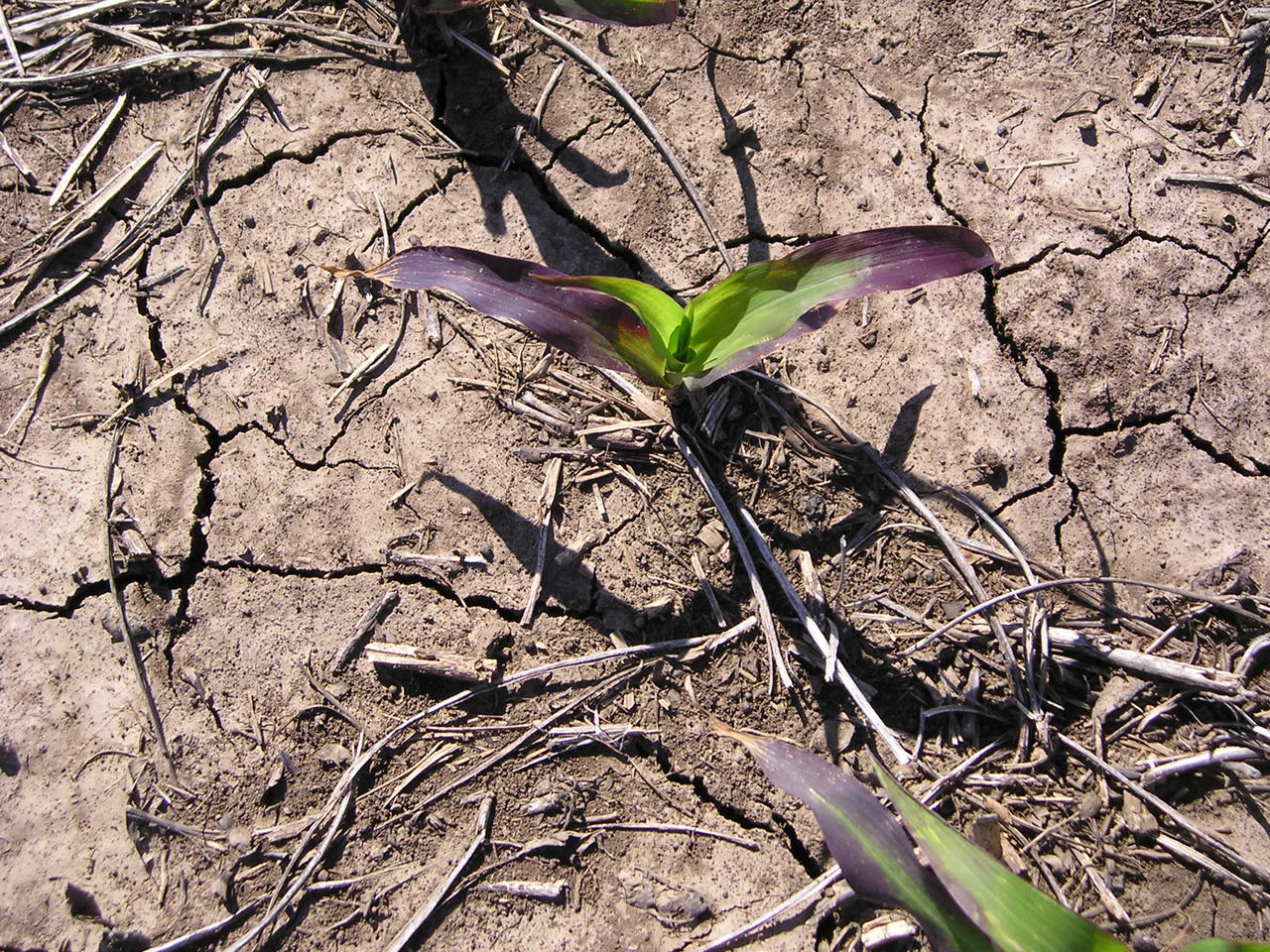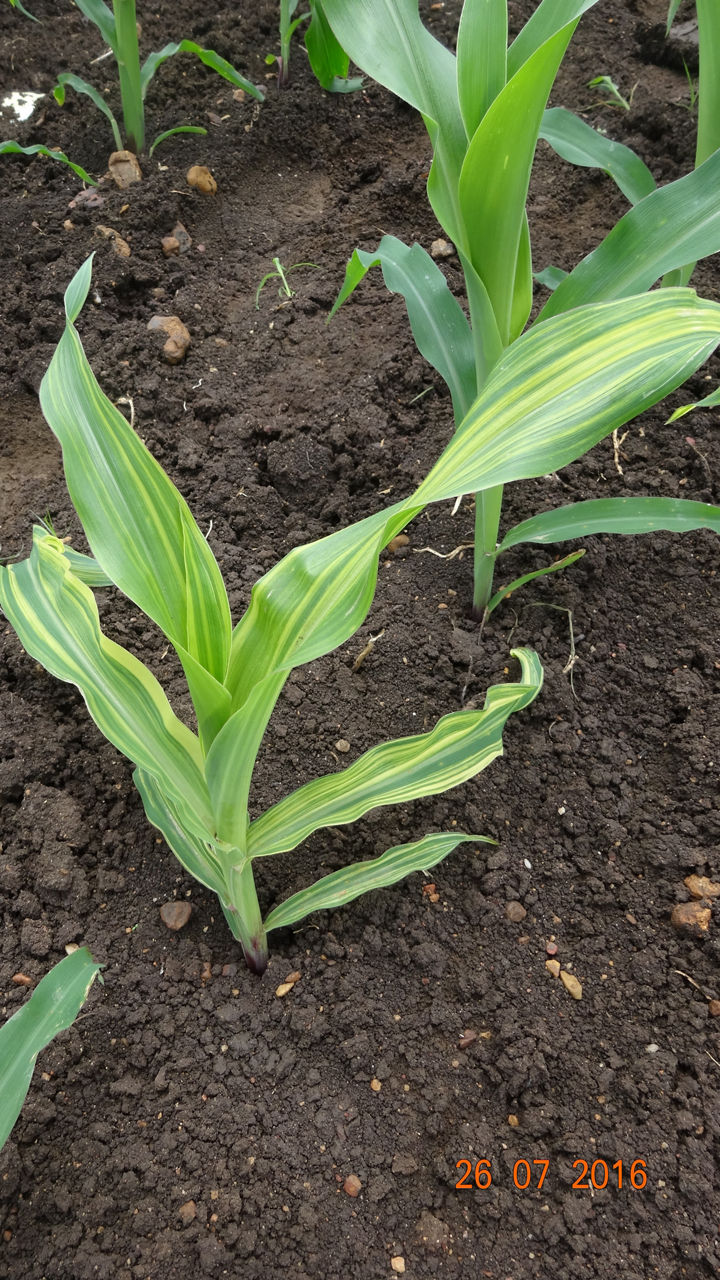3 MIN READ
Fallow Syndrome in Corn
February 25, 2020
The fallowing of a field can be intentional as a measure to conserve moisture or a result of prevented planting. In arid areas of the western United States, fallowing for a year or more is a common practice to help build soil water reserves. In the Midwest, flooding and continuous rainfall can, on occasion, prevent the planting of a crop. Regardless of the cause, corn planted into previously fallowed fields may exhibit nutrient deficiencies, particularly phosphorus (P) (Figure 1) and zinc (Zn) (Figure 2), and is generally referred to as fallow syndrome.1 Should a field not be planted, farmers should be aware that these nutrient issues may occur and be proactive in their management to help reduce the potential for these deficiencies.


Cause of Fallow Syndrome Nutrient Deficiencies
Corn is dependent on a symbiotic relationship with vesicular arbuscular mycorrhizae (VAM) fungi because of their ability to assist in the absorption of water and non-mobile P and Zn. The VAM fungi grow inside and outside of the roots. External hyphae (long filamentous branches) of VAM fungi can be dramatically longer than plant roots and serve as root extensions to aid in the uptake of water and nutrients. When fields are absent of crops or weed growth, the population of VAM fungi can decrease because they cannot survive in the absence of acceptable (most grass species) root tissue. The fungi are also unable to survive in the presence of brassica roots (canola, cabbage, broccoli, and others) or sugar beets; therefore, corn planted after these crops may exhibit fallow syndrome symptoms. Additionally, the fungi cannot survive when fields are saturated or flooded.
Fallow Syndrome Management Options
Options to help reduce the potential for fallow syndrome include allowing weeds to grow freely, the planting of cover crops in the fall, use of starter fertilizer, and the planting of an alternative crop. Weed growth in fallowed fields may maintain a healthy VAM population; however, in the arid regions, weed growth can use valuable water reserves. In all areas, weeds can add to the weed seed bank if allowed to reproduce. With the increasing potential for herbicide-resistant weed species, maintaining a weed-free environment is a best management recommendation.
In non-arid areas, the planting of VAM-supporting cover crops may be a consideration to help maintain and increase the VAM population. Additionally, cover crops can: scavenge nitrogen, provide erosion protection, improve soil tilth, provide livestock feed, and help reduce weed growth.1 If herbicides are used to destroy the cover crop, plant-back or rotational restrictions MUST be followed.
If corn is to be planted on fallowed acres, a banded application of 5 gl/acre of 10-34-0 and 1 qt/acre of chelated Zn on silt or silty-clay loams can help reduce the effects of P and Zn deficiencies, respectively.2,3 If applications are to be made to sandy soils, the 10-34-0 rate should be reduced to 3 gl/acre.3 The starter fertilizer should be applied 2 inches below and 2 inches to the side of the seed row to avoid seed and seedling injury.3
Soybean and sorghum are more tolerant to low VAM populations than corn. Where possible, these crops may be alternatives.
Sources:
1Stahl, L. 2014. Reduce risk of fallow or flooded soil syndrome with cover crops. University of Minnesota. http://blog-crop-news.extension.umn.edu.
2Stahl, L., Fernandez, F., and Kaiser, D. 2018. Reduce risk of fallow or flooded soil syndrome with cover crops. University of Minnesota. https://extension.umn.edu/.
3Sutradhar, A.K., Kaiser, D.E., and Rosen, C.J. 2016. Zinc for crop production. University of Minnesota Extension https://extension.umn.edu/.
Additional sources: Ellis, J.R. 1998. Post flood syndrome and vesicular-arbuscular mycorrhizal fungi. Journal of Production Agriculture. Vol 11, no. 2: 200-204.
Sawyer, J., Mallarino, A.P., and Al-Kaisi, M. 2011. Flooded soil syndrome. Flood Recovery for Cropland. University of Nebraska-Lincoln and Iowa State University Extension.
Web sources verified 02/04/2020.
4013_S3